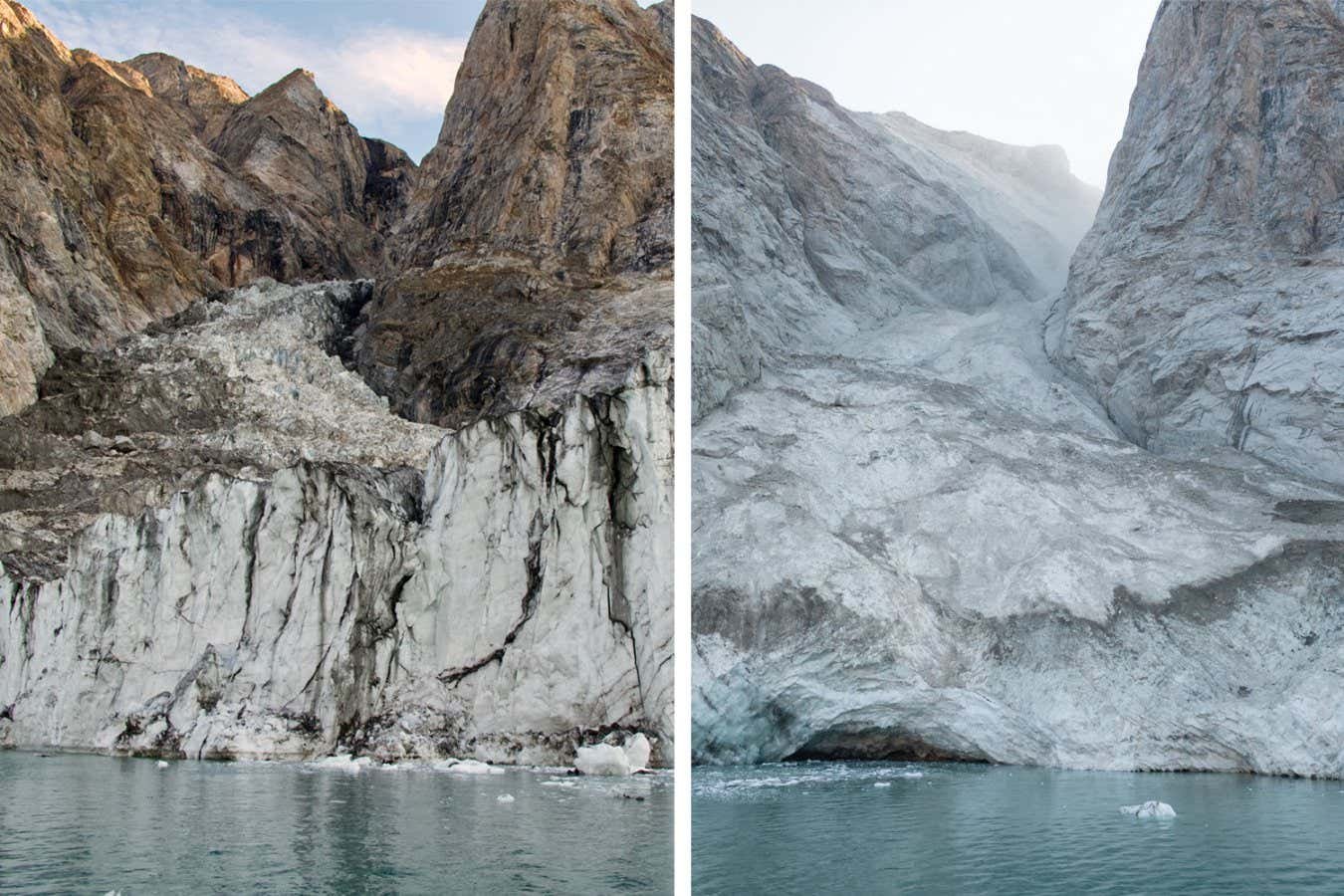
Part of a mountain and glacier alongside Dickson Fjord in Greenland in August 2023 (left), and the same spot after a landslide in September 2023
Søren Rysgaard/Danish Army
On 16 September 2023, seismic monitoring stations around the world detected a strange signal that faded over time but remained detectable for nine days.
“We were like, ‘Oh wow, this signal is still coming in. This is completely different to an earthquake’,” says Stephen Hicks at University College London. “We called it an unidentified seismic object, or USO.”
Hicks and others have now shown that this signal was caused by water sloshing from side to side across the 2.7-kilometre-wide Dickson Fjord in eastern Greenland. This wave was triggered by a massive landslide that resulted in a 110-metre-high tsunami.
Earthquake signals usually last only minutes and are a mix of different frequencies, says Hicks. The USO had a single frequency of around 11 millihertz, meaning it repeated every 90 seconds. Once it became clear that the signal began at the same time as the Greenland landslide, Hicks and his colleagues realised there was probably a connection.
Many objects, such as a bell, will vibrate at a particular resonant frequency if struck. The same is true of bodies of water, from swimming pools to oceans. Disturbances such as earthquakes and winds can set them rocking, generating a kind of standing wave known as a seiche.
Based on its width and depth, the researchers calculated that the resonant frequency of Dickson Fjord is 11 millihertz – matching the signal. What took them much longer to understand is why the fjord kept rocking for so long.
Immediately after the tsunami, the seiche was going up 7 metres on either side of the fjord. Within days, it had gone down to a few centimetres – so small that a Danish naval boat that went up the fjord three days after the landslide didn’t notice it.
But the seiche just kept going, and it probably persisted long after the nine days, when it was no longer detectable by distant seismic stations, says Hicks. “No one has ever reported seiches lasting for so long, or dissipating their energy so slowly.”
The shape of the fjord was a crucial factor, computer modelling by the team shows. The landslide site is 200 kilometres inland, with a glacier blocking one end of the fjord and a sharp bend at the other. The round bottom of the fjord also acted a bit like a rocking chair, allowing the water to move with little resistance.
All these factors resulted in a high degree of energy trapping, says Hicks, instead of the wave rapidly dissipating as usual.
The landslide itself was a direct result of climate change. A steep glacier was helping to hold up a mountainside. As the glacier thinned, it gave way, resulting in an estimated 25 million cubic metres of rock and ice falling into the fjord – the first ever landslide recorded in eastern Greenland.
Nobody was in the area at the time, but cruise ships do go up the fjord. The tsunami destroyed equipment being used to monitor the area, along with two abandoned hunting huts.
As the planet keeps warming, there will be more landslides of this kind, says Hicks, who notes that the findings show climate change is now even affecting the earth below us as well as the atmosphere and oceans. “For the first time, we’re looking down beneath our feet to see some of the catastrophic impacts of climate change,” he says.
Topics:

Felecia Phillips Ollie DD (h.c.) is the inspiring leader and founder of The Equality Network LLC (TEN). With a background in coaching, travel, and a career in news, Felecia brings a unique perspective to promoting diversity and inclusion. Holding a Bachelor’s Degree in English/Communications, she is passionate about creating a more inclusive future. From graduating from Mississippi Valley State University to leading initiatives like the Washington State Department of Ecology’s Equal Employment Opportunity Program, Felecia is dedicated to making a positive impact. Join her journey on our blog as she shares insights and leads the charge for equity through The Equality Network.




